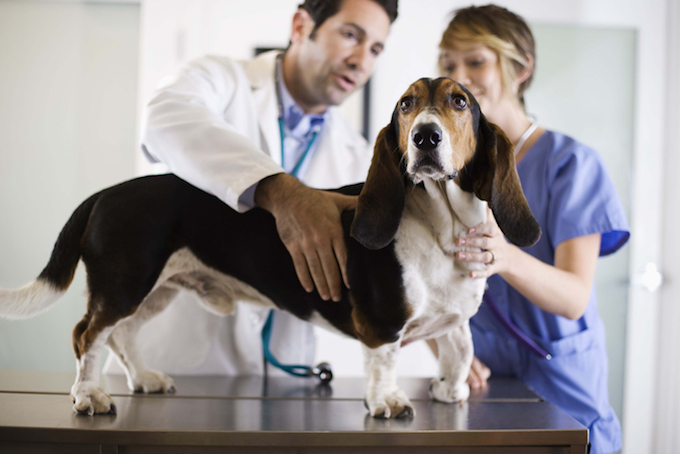Urethral prolapse in dogs is a condition where a male dog’s urethra emerges outside of the tip of the penis. Sometimes, the condition is hereditary.
Thankfully, in many cases the condition does not require treatment, unless it causes an infection.
Technically, the condition is also known as out-of-place urethral lining in dogs.
If you see the signs of the condition in your dog, then get to a veterinarian for a proper diagnosis and treatment.
Here’s what you should know about the symptoms, causes, and treatments for the condition.
Symptoms of Urethral Prolapse in Dogs
The condition produces a number of symptoms. For instance, some of the most common symptoms include:
- Red mass at the penis tip
- Purple mass at the penis tip
- Problems peeing
- Straining to pee
- Pain
- Licking the genitals more than usual
- Inflammation
Causes of Urethral Prolapse in Dogs

The cause of the condition is sometimes genetics. However, some of the other common causes of the condition include:
- Urethral diseases
- Penis fracture
- Testicular diseases
- Irritation (after sexual activity)
- Abdominal pressure
Additionally, both Bulldogs and Boston Terriers seem to suffer from the condition more frequently than other breeds.
Treatments for Urethral Prolapse in Dogs
Firstly, your vet will ask about your dog’s symptoms. Secondly, your vet will ask about your dog’s full medical history. This will include breed-specific problems.
Thirdly, your vet will carry out an examination of your dog’s genital area. Additionally, X-rays, MRIs, and CT scans can all be used to check on your dog’s bladder and prostate.
Generally, treatment can take on a number of forms. For example, if there is an infection, medication can be used to clear it up. As always, if your vet prescribes your dog any medicine, make sure to stick to the correct dose and frequency instructions. Also, complete the full course of medicine.
Alternatively, in some cases surgery is an option. Although in other cases, no treatment will be needed.
If no surgery is needed, letting your dog rest up can help the condition heal. You’ll also need to reduce your dog’s physical activity while they recover. Your vet can help formulate a safe exercise recovery plan for your dog.
Have you ever cared for a dog who suffered from this condition? How did your vet help your dog recover? Let us know in the comments section below.








